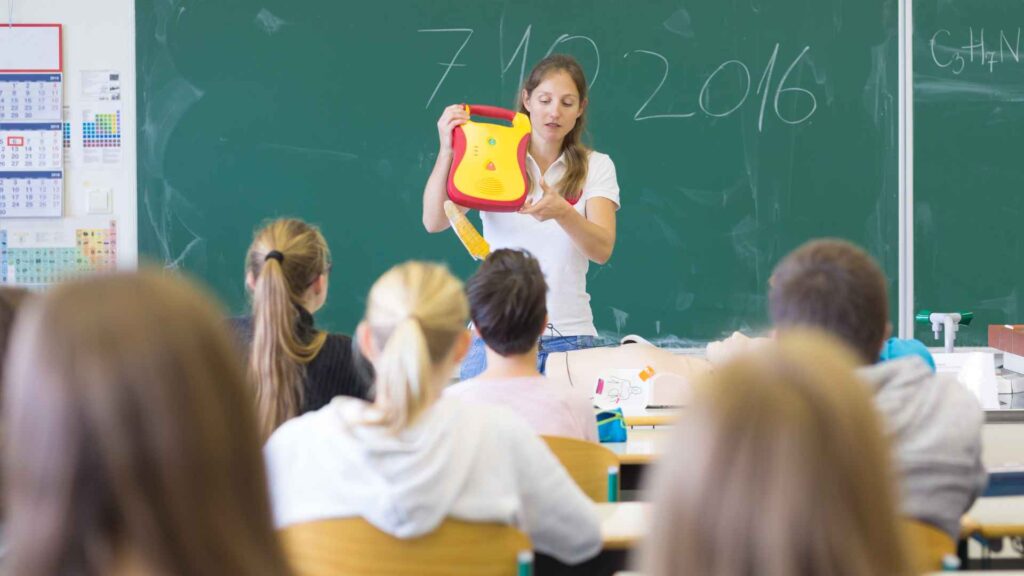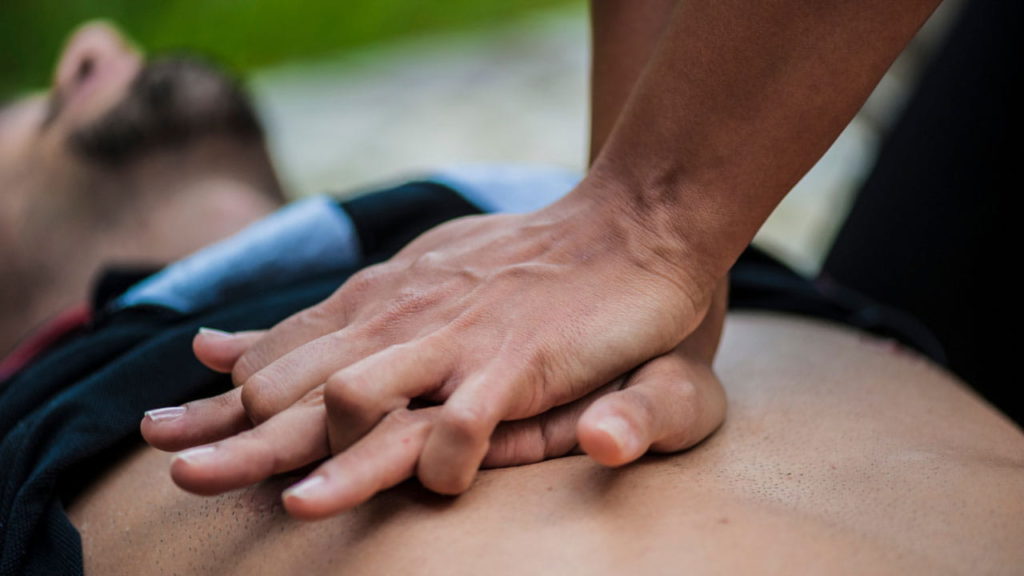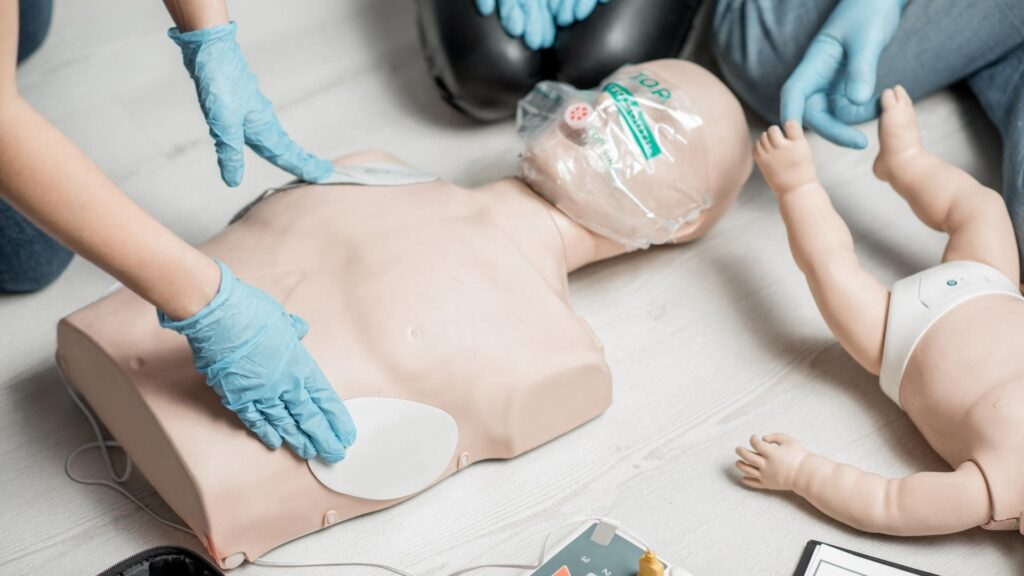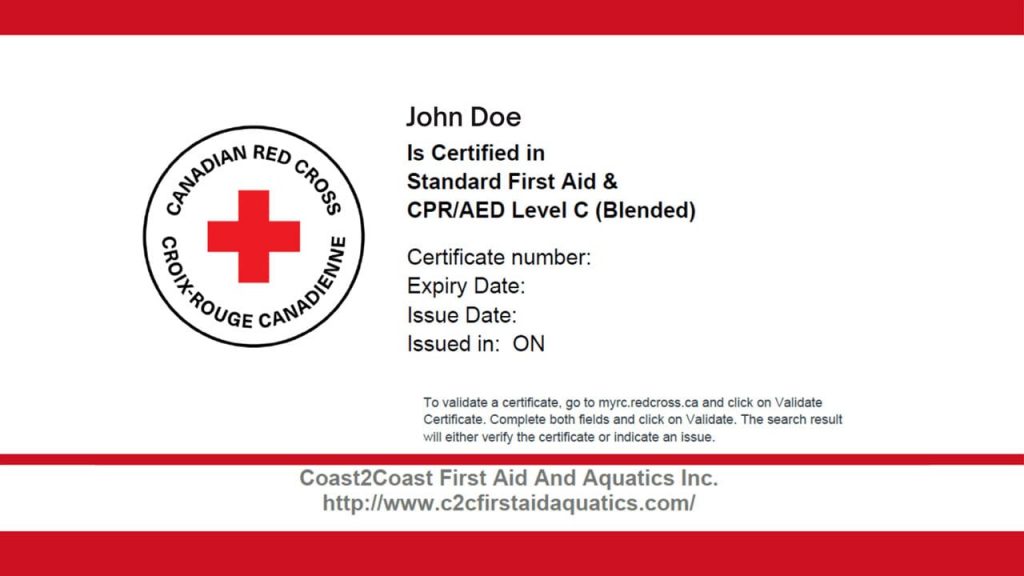IN THIS BLOG
IN THIS BLOG
- The Importance of First Aid Education in Equipping Students for Emergencies
- Key Benefits of Implementing First Aid Training in Schools
- Supporting Physical and Mental Health Through First Aid Education
- Effective Strategies for Implementing First Aid Programs in Schools
- Frequently Asked Questions About First Aid in Schools
- Preparing Students for a Safer Future Through First Aid Training
First aid is an essential life skill that empowers individuals to take action in emergencies. Teaching first aid in schools not only equips students with the ability to manage unexpected situations but also fosters a culture of care and responsibility. This blog will explore why first aid should be taught in schools and how it benefits students, teachers, and the broader community.
The Importance of First Aid Education in Equipping Students for Emergencies

Emergencies can occur anytime at home or in public spaces such as schools. First aid training equips students with the knowledge and skills to address common emergencies, from minor injuries like cuts and sprains to more serious incidents such as heart attacks and choking. By incorporating first aid training into the school curriculum, students are better prepared to handle these situations calmly and effectively.
According to the Canadian Red Cross, prompt action during an emergency can make a life-saving difference. Providing young people the tools to act during such critical moments can significantly reduce preventable injuries and fatalities. This makes integrating first aid education into schools not just an option but a necessity.
Key Benefits of Implementing First Aid Training in Schools

First aid training offers several benefits that extend far beyond the classroom. When students are taught these vital skills, they become more confident in managing stressful situations. First aid education also instills responsibility, as students learn how their actions can positively affect others in need. Moreover, by teaching first aid in schools, institutions cultivate a culture of care where students look out for one another and those in their communities.
In addition to saving lives, first aid education helps students develop essential life skills, such as quick decision-making and problem-solving. The benefits of teaching first aid in schools impact not only the individual students but also contribute to building safer and more resilient communities.
Instilling Responsibility and Building Confidence in Students
Teaching first aid to students fosters a sense of responsibility and builds their confidence. Knowing how to administer basic care in an emergency empowers students to step in and provide assistance when needed. This self-assurance not only benefits them in crises but also helps them develop leadership and decision-making skills that will serve them throughout life.
For instance, a student who witnesses a peer fainting in the hallway is more likely to stay calm and provide appropriate care until professional help arrives if they’ve been trained in first aid. This sense of preparedness instills a valuable sense of responsibility and confidence.
Life-Saving Skills that Reduce Injury and Speed Up Recovery
One of the most impactful reasons for teaching first aid in schools is the potential to save lives. Students trained in CPR, wound care, or how to treat burns are becoming their communities’ first line of response. In many cases, early intervention during an emergency significantly reduces recovery time and prevents further complications.
First aid training not only protects the injured but also maximizes the effectiveness of medical responders when they do arrive by enabling students to manage minor injuries and stabilize more severe conditions before medical professionals arrive.
Preparing Students for Real-World Emergency Situations
Emergencies don’t wait for the perfect time or place, and students, like anyone else, can encounter them anywhere. First aid education in schools prepares students to act in real-life emergencies, whether it’s a family member at home, a friend at the playground, or a stranger in a public space. With first aid knowledge, students become vital assets in any community, contributing to a culture of safety and readiness.
On a larger scale, when young people are equipped with these skills, entire communities benefit. Students with first aid training can offer help during public emergencies, creating a ripple effect of safety awareness and preparedness from an early age.
Register For A First Aid Training
Coast2Coast offers training programs across 24 locations in Canada. Register today and start your journey toward making a real impact in your community.
Supporting Physical and Mental Health Through First Aid Education

First aid education doesn’t stop at physical injuries—it can also include mental health first aid. Many schools increasingly recognize the importance of supporting students’ mental well-being, but formal mental health first aid training could go even further. Teaching students to identify early signs of anxiety, depression, or panic attacks among their peers provides critical early support and encourages them to seek professional help when needed.
By integrating physical and mental health first aid, schools can take a holistic approach to ensuring students’ overall well-being and safety.

Effective Strategies for Implementing First Aid Programs in Schools
Successfully implementing school first aid programs requires thoughtful planning and collaboration with certified providers. Schools need to ensure that the training they offer meets national standards and is tailored to their students’ age groups. Partnering with certified organizations, such as Coast2Coast First Aid & Aquatics, makes this process easier and ensures that the training is delivered effectively.
Moreover, a school-wide approach, where students and staff are trained in first aid, helps foster a safer and more supportive learning environment. By including these programs in the regular curriculum or offering them as extracurricular activities, schools ensure that students receive the necessary training to become community lifesavers.
Partnering with Certified First Aid Training Providers for Comprehensive Programs
Implementing first aid programs in schools can be straightforward when partnering with certified training providers like Coast2Coast First Aid & Aquatics. We offer comprehensive, age-appropriate first aid courses that follow Canadian Red Cross guidelines, ensuring national standards are met. Schools can integrate these programs into their health or physical education curriculum or offer them as stand-alone courses.
Educators ensure that all students have access to this critical life skill by including first aid training in the school schedule.
Empowering Teachers and Staff to Lead by Example
In addition to training students, it’s vital to ensure that teachers and school staff are certified in first aid. When the entire school community is prepared, it fosters a safer environment for everyone. Teachers often serve as first responders when incidents occur during school hours, so equipping them with these skills is crucial for immediate response. In Canada, it’s typically a requirement for teachers and early childhood educators to be certified in Standard First Aid & CPR/AED Level C.
Coast2Coast First Aid & Aquatics offers instructor development programs that allow educators to become certified trainers. By doing so, schools can create a self-sustaining cycle of first aid education, with teachers passing their knowledge on to students year after year. In order to do this, educators must become certified first aid instructors, and then apply to become resellers through Coast2Coast.
Ready to Make a Difference in your School Community?
Partner with Coast2Coast through our reseller program and bring essential first aid training to your students. Empower the next generation of lifesavers today! Contact us to learn more about getting started.
Frequently Asked Questions about First Aid in Schools

As more schools begin to implement first aid programs, common questions arise from educators, parents, and administrators. From the age at which children should start learning first aid to the cost associated with such programs, these FAQs help clarify the key points to consider when introducing first aid training in schools.
By addressing these questions, schools can better understand how to integrate first aid training into their schedules, budgets, and overall educational goals. Additionally, providing clear answers helps alleviate concerns and fosters support from parents and the community for these vital programs.
At What Age Should First Aid Training Begin for Children?
Children as young as 5 or 6 can begin learning the basics of first aid, such as recognizing an emergency and calling for help. As students progress through school, more advanced skills like CPR, AED use, and treating fractures or burns can be introduced. Starting early ensures that students build their knowledge over time and are well-prepared as they grow older. We typically recommend that children age 12 and above complete any official Canadian Red Cross training, though.
How Much Does First Aid Training Cost for Schools?
First aid training costs vary based on factors like the number of students, course type, and materials. Many training providers offer discounted rates for schools, and some regions provide government grants or subsidies to support the implementation of health and safety programs. Partnering with Coast2Coast First Aid & Aquatics, we can make the process affordable and seamless.

Buy A First Aid Kit
Take care of any small injuries your family or students receive with our Multi-Purpose First Aid Kit. Treat them with the wide range of supplies included in this kit.
Preparing Students for a Safer Future Through First Aid Training
Teaching first aid in schools equips students with invaluable life-saving skills that extend far beyond the classroom. By empowering students to act confidently in emergencies, we help foster a more resilient, compassionate society. Schools that implement first aid programs create safer environments for students and staff and contribute to developing healthier, more prepared communities. We hope this gives you a better understanding of why first aid should be taught in school.
If you are an educator or school administrator looking to implement first aid training for the education industry, explore the comprehensive plan offered by Coast2Coast First Aid & Aquatics HERE and take the first step toward empowering the next generation of lifesavers.




















No comment yet, add your voice below!